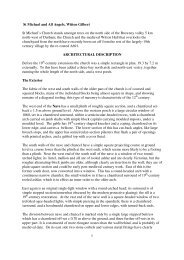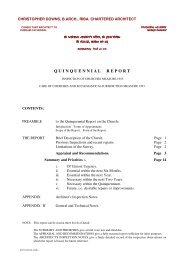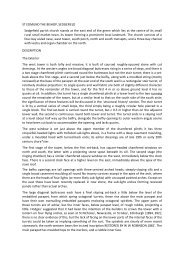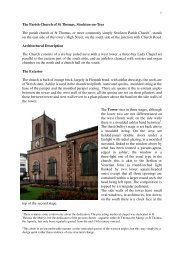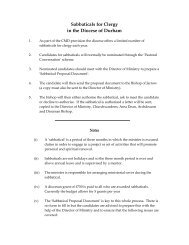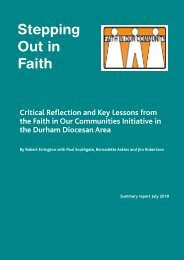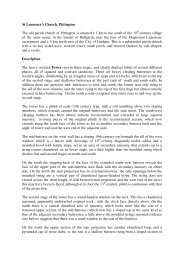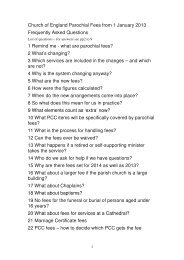You also want an ePaper? Increase the reach of your titles
YUMPU automatically turns print PDFs into web optimized ePapers that Google loves.
10shown on the 1857 drawings, and has in addition been subsequently extended to thewest.The major renovation and re-ordering that took place in 1980-81, when the interiorwas re-arranged liturgically to face an altar in the position <strong>of</strong> the old south door, isreally beyond the scope <strong>of</strong> this work.The Churchyard<strong>St</strong> <strong>Nicholas</strong>’ Church now has no churchyard; in common with some other urbanchurches, that which it once had has been gradually destroyed by the encroachment <strong>of</strong>surrounding buildings and roads. The history <strong>of</strong> the cemetery, and various excavationwithin the Market Place (revealing vaulted and human remains) are recorded anddiscussed by Emery et al (1997); there were no burials after 1846, by when thecemetery was confined to a small slip <strong>of</strong> ground on the north <strong>of</strong> the church.Archaeological AssessmentThe present church is entirely <strong>of</strong> mid-19 th century date, except for the re-use <strong>of</strong> one ortwo old features in Edmondbyers parish church, and the possible incorporation <strong>of</strong>others in the vestry block. It is clear that the present building occupies more or lessthe same footprint as its medieval predecessor, although perhaps not built directlyupon its foundations (Emery et al, 85) and it is possible that archaeological remainssurvive beneath the present floors, although these will certainly have been disturbedto some extent by later works (including the underfloor heating system <strong>of</strong> the presentchurch). Nevertheless, any significant underfloor works will need to be accompaniedby an archaeological watching brief.It is clear that significant archaeological remains – largely <strong>of</strong> burials, but also perhaps<strong>of</strong> the east end <strong>of</strong> the medieval church – survive outside the present building, beneathroads and pavements.Peter F Ryder December 2007Photograph <strong>of</strong> <strong>St</strong><strong>Nicholas</strong>’ Churchc1855, showing theeast end as rebuilt in1841




